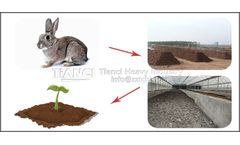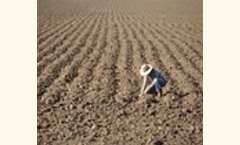Wheat Yield Articles & Analysis
43 articles found
Treatment: Yield Check: 126.0 Bu AgZyme®: 135.5 Bu Summary: Yield Increase of 9.5 Bu/Acre with AgZyme® Application: AgZyme® was applied on half of a 37 acre field at 12.8 ounces per acre. The two sides of the field were harvested separately. All treatments were fertilized according to growers standard practice ...
Wheat crops in the Americas, Asia, Europe, and Africa are regularly damaged by wheat yellow mosaic virus (WYMV), and there is a high demand for wheat varieties or cultivars that are resistant to this virus. The study, published in the Proceedings of the National Academy of Sciences, found that the resistance gene originated in an ancient ...
INTRODUCTION: CROP AREA ESTIMATION The two components of agricultural production estimation are crop area and yield estimation. In order to estimate yield, Producers generally measure the amount of a particular crop harvested in a sample area to estimate crop yield. ...
Effects of boron fertilization on the yield and some yield components of bread and durum wheat. Turkish Journal of Agriculture and Forestry 27, 329-335. ...
Rabbit manure as basic fertilizer, high efficiency, long fertility, significant yield, especially suitable for watermelon, pumpkin, tomato, fruit trees and so on. Compared with other organic fertilizers, the application of rabbit manure can increase wheat yield by 30% and rice yield by 20% - 28%. Treatment of rabbit manure as ...
To make the most of our learning and start to understand how far we can push yields, we set up a replicated trial in a wheat and a canola field. CANOLA: We applied nitrogen to the canola field at the 5-leaf stage. ...
After harvest, Indigo worked with growers who had planted Indigo Wheat to collect yield and quality results from their fields. We used data from those satellites – plus local weather data – to train computer models to predict the yield for each field. ...
Thereafter, it analyzes the impact of agricultural water reallocation (AWR) on crop yield and revenue. The study ends with an estimation of the compensation for affected farmers and a discussion of the compensation methods. Regression results indicate that irrigation frequency shows a significantly positive impact on crop yield and net crop revenue. The change of ...
Laboratory and soil-plant-air-water analysis showed silt-loam being the most dominant soil type in the study area. A yield simulation model, AquaCrop, was able to simulate the crop yield with reasonable accuracy. Future (2030–2060) crop yield simulations, on forcing the Providing Regional Climates for Impacts Studies (PRECIS) based on regional ...
The earthworm excrement becomes a high-quality mixture of organic and mineral substances in a form that plants can readily absorb — substances that have been refined in multiple working steps. Increase in yield thanks to earthworms The importance of this soil-biological potpourri for the growth of plants has been shown by studies in Holland, where earthworms ...
This meant shifting fertilizer production from the public sector to the private sector. There were high-yielding dwarf varieties of wheat. Initially developed in Mexico by Norman Borlaug and his colleagues with support of the Rockefeller Foundation, they had been tested in India and performed very well. India needed to accelerate the dissemination of these ...
The objective of this study was to evaluate the performance of the FAO-AquaCrop model in winter wheat in the southern Loess Plateau of China. Multi-year field experimental data from 2004 and 2011 were used to calibrate and validate the model for simulating biomass, canopy cover (CC), soil water content, and grain yield under rainfed conditions. ...
In some agriculturally advanced countries, the dramatic climb in yields has come to an end as yields have plateaued. For example, the rice yield per hectare in Japan, after climbing for more than a century, has not increased at all over the last 17 years. ...
The ozone effect on crops is evaluated based on the AOT40 index (accumulated exposure over threshold of 40 ppb). We find that wheat and soybeans are more sensitive to ozone compared to rice and maize. Assuming no change in field management practices we find that in 2000 there are losses of approximately 30.5%, 10.4%, 2.8%, and 19.0% of total yields for ...
In the present study different doses of press mud along with NPK were applied to wheat crop in pot and field experiments. The increasing levels of press mud application improved soil physical conditions like increase in total porosity and reduced bulk density. ...
Results are summarized for the first 15 yr of an eight-site, long-term experimental network in China designed to assess the sustainability of cropping systems in environments representing 70% of Chinese cropland. Systems were wheat–maize double cropping (two crops per year) at four sites, wheat–rice double cropping, rice-based triple cropping, and ...
A 4-yr study conducted in Minnesota evaluated the previous crop effects of all 2-yr rotational sequences of cuphea with corn, soybean, and wheat on crop yields and stands, soil water and N content, and production economics. Cuphea seed yield was unaffected by previous crop and yields of the other crops were unaffected by cuphea. ...
(DIC hereafter) chromosome 6BS revealed that modern wheat varieties have a nonfunctional allele. The DIC allele accelerates senescence and increases grain protein concentration (GPC) relative to the nonfunctional allele, but its effect on yield is not known. Here we describe the effect of Gpc-B1 on grain yield, grain weight, protein ...
The objective of the present work was to determine the relationship between spectral reflectance indices (SRI) and yield in spring wheat (Triticum aestivum L.) in NW Mexico in three environments (irrigated, water-stress, and high-temperature). ...
Root-lesion nematodes (Pratylenchus neglectus and P. thornei) are widely distributed and substantially reduce grain yields in wheat (Triticum aestivum L.)-producing regions of the Pacific Northwest (PNW). The objective of this research was to determine if wheat and barley (Hordeum vulgare L.) cultivars differ in tolerance to these nematode ...













